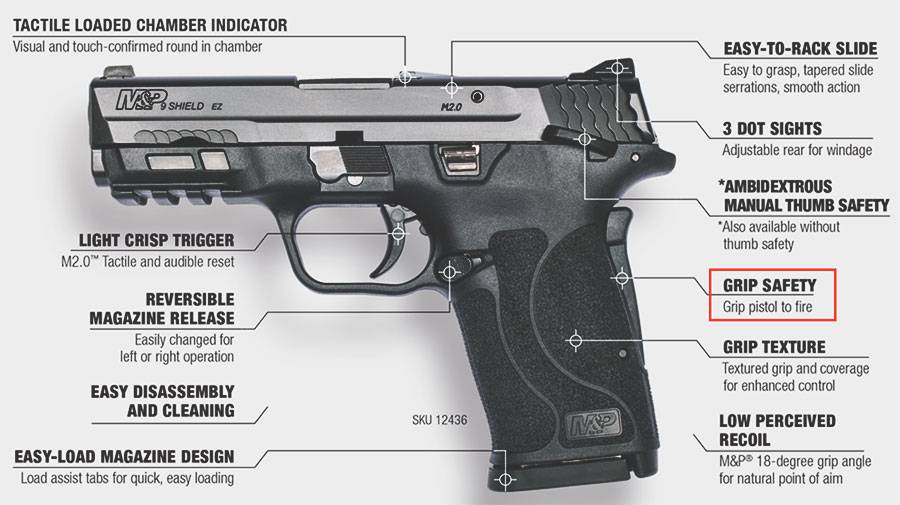Several 9mm firearms feature safety in the grip. Glock, for example, offers this feature on several of its models, including the Glock 17 and 19. Other manufacturers that offer 9mm pistols with a grip safety include Beretta (92FS), FN Herstal (FNS-9), H&K (VP9), Ruger (SR9), Sig Sauer (P320), and Smith & Wesson (M&P9).
Grip safeties are an important safety feature, as they prevent the firearm from being fired unintentionally. By requiring the shooter to depress the grip safety before the gun can be fired, it helps to ensure that only authorized users can fire the weapon.
Grip safeties can also help to prevent accidental discharge if the gun is dropped, as the grip safety will disengage and prevent the gun from firing if it is not properly gripped.
There are a few downsides to grip safeties, however. The most notable is that they can make it more difficult to fire the gun in a self-defense situation, as the shooter may not have time to properly disengage the safety. Additionally, if the grip safety is not properly engaged, the gun will not fire – even if the trigger is pulled. This can be problematic if the shooter is not aware that the grip safety is not engaged, as they may think the gun has malfunctioned.
overall, grip safeties are a valuable safety feature that can help to prevent accidental discharge and unauthorized use of a firearm. However, it is important to be aware of the potential downsides of grip safeties and to make sure that the grip safety on your 9mm pistol is properly engaged before using it.

